The Top 16 franchise-making trades in Atlanta Braves history
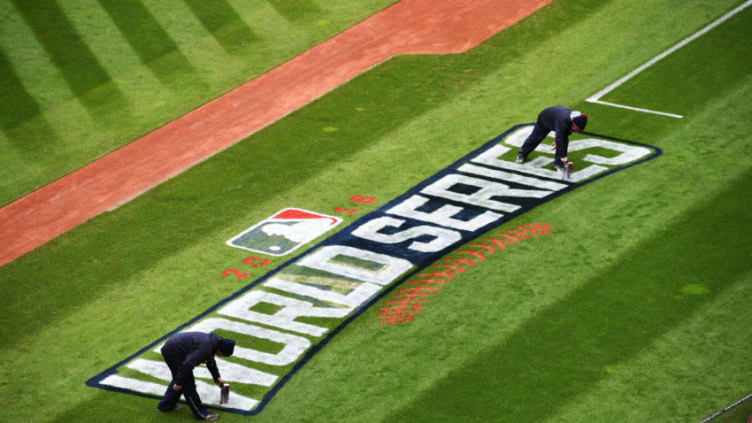
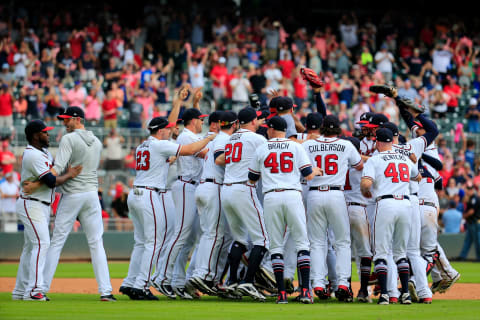
As the Atlanta Braves fight to win a second consecutive division title, we take a look at deals that built their championship teams.
The franchise now known as the Atlanta Braves goes back a long way in the annals of baseball history. While the Cincinnati Reds make the claim as baseball’s oldest team, the Braves hold the banner as the longest continuously operating franchise.
This club began as the Boston Red Stockings in 1871, a team that dominated the first professional league – National Association of Professional Baseball Players (the NA) for most of its existence. It was a mini-dynasty, culminating in a 71-8 record in 1875.
The Boston Red Caps became founding members of the National League we know today when it commenced operation in 1876. Since then, the team’s been known as the Beaneaters (though many continued to call them the Red Stockings), the Doves, the Rustlers, the Braves and the Bees, before reverting back to the Braves in 1941.
According to Baseball-Reference.com, 2,008 players wore the uniform in that 143-year span since helping form the NL. Some of them signed as amateurs, some came on board as free agents and the rest became a member of franchise teams after being acquired from another team.
Some of them made an immediate impact at the major league level, took part in a championship season and helped create the story of three improbable franchise championships and multiple other World Series appearances.
These are the Sweet 16 best trades made by the Braves franchise since 1890.
To start off, it’s rare that a team chasing a title trades a .300 hitter to their competition, but during June 1914, the St. Louis Cardinals did just that. Although the winning streak didn’t start for a week for the acquiring team, some say this trade turned the tide for The Miracle Braves.
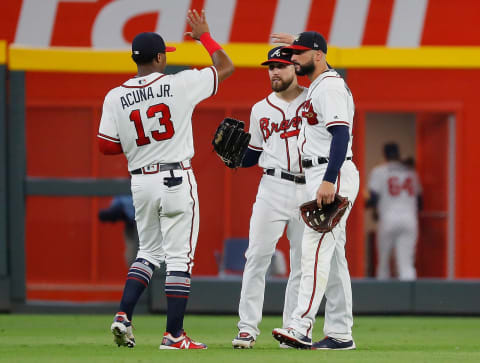
16. Two for one
1914 – TED CATHER/POSSUM WHITTED – ST. LOUIS CARDINALS
On May 25, 1914, St. Louis Cardinals left fielder Ted Cather had a .352/.364/.426/.790 line, good for third in the NL. He also had a history of fighting with teammates. Utility man Possum Whitted played just 20 games for the Cardinals and batted .129/.129/.161/.290.
That May afternoon, the Cardinals lost – coincidentally to the Braves – a fight involving Cather ensued and this trade began to take shape.
Braves manager George Stallings introduced platooning to his everyday lineup. He had to — his whole outfield hit left-handed with ugly same-sided splits.
He knew about the fight and the Cardinals’ desire to get rid of Cather. On June 29, Stallings convinced the Cardinals to take starting pitcher Hub Perdue (2-5 with a 5.82 ERA at that time) for Cather and to send Whitted along as well.
Stallings wanted Cather, but Whitted proved to be the Ender Inciarte of the package. No longer resigned to gathering splinters on the bench, Whitted played more often and improved significantly at the plate.
By year’s end, he’d replaced Wilson Collins‘ 257/.297/.257/.554, .273 wOBA, 60 wRC+ and -0.3 fWAR line with a .261/.326/.376/.703, 103 OPS+ line, .339 wOBA, 101 wRC+ and 1.0 fWAR.
His defense proved so good that, by season’s end, he played somewhere in almost every game.
Cather made a tremendous difference to left-field offensive impact, replacing Jim Murray‘s .232/.277/.304/.581 line, .282 wOBA, 65 wRC+ and -0.7 fWAR with a .297/.338/.400/.738 115 line, .353 wOBA, 110 wRC+ and 0.3 fWAR
Together, Cather and Whitted provided a two-win (by WAR values) boost to the lineup and Whitted’s versatility allowed Stallings to platoon at multiple positions.
If Whitted was ‘Inciarte 2017,’ the Cather/Joe Connolly combo was the equivalent of what Adam Duvall/Nick Markakis could be: a platoon in right field that allows Markakis to rest and be the best player he can be.
Oh, and those 1914 Boston Braves roared back, turning around a 69-82 season from 1913 and won 94 games in 1914 … and they swept the World Series over the Philadelphia Athletics.
We’ll hear a lot more about this special team later on.
Next: This trade shows what happens when a manager gets mad at one of his best hitters and forgets that his job is to win games.
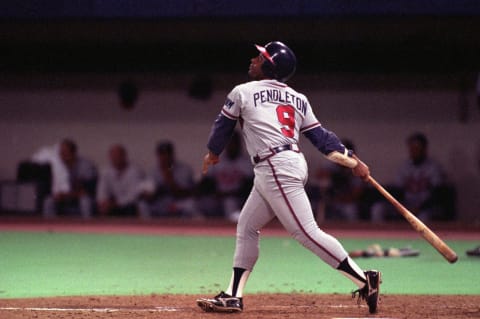
15. Power at third at last
1914 – RED SMITH / BROOKLYN ROBINS
James Carlisle “Red” Smith, led the league in doubles, total bases, extra-base hits, RBI, slugging percentage and OPS.
He seemed set for a long career in Brooklyn until August 1914 when he and manager Wilbert Robinson got into an argument. The next day, Smith became a Brave.
There’s no record of the price the Braves paid for Smith; whatever it was, he was worth it. Smith’s lack of defense bothered his manager, but his bat offset any downside.
The Miracle Braves reeled off a 15-6 streak in July but needed a run producer. In his first game for Boston, Smith went 1-for-3 with an RBI.
Over the remainder of the season, he batted .314/.441/.449/.890 including 17 doubles, a triple and three home runs, while driving in 37. In today’s terms, that line gave him 145 wRC+, a .409 wOBA and 2.6 WAR.
Smith carried the team over the next 60 games. The Braves met the Robins in a doubleheader on the last day of the regular season. In the ninth inning of game one, Smith tried to stretch a single into a double. As he slid into second, his spikes stuck in the dirt as the Robins’ second baseman George Cutshaw tried to put on the tag.
Smith’s right shin struck Cutshaw’s left leg; (his) spikes dug into the dirt (throwing the) weight of his body on the ankle . . . His body was thrown several feet past the bag . . . suffered an anterior dislocation of the ankle . . . , a fracture of the fibula . . .a fracture of the tibia, and ruptures of the ligaments of the ankle joint.
He did play again but never made it to a World Series. After retirement, Smith moved to Marietta and worked as a tax investigator for the City of Atlanta.
His daughter told SABR’s Charles F. Faber her father was “overjoyed” with the Braves’ arrival in Atlanta in 1966. He died nine days after that season ended.
Next: At 33-years-old with 1,300 Major League games, Jeff Heath saw the Braves as his last chance to play in a World Series and that idea rejuvenated him.

14. The Big Bat Veteran
1948 – JEFF HEATH / ST. LOUIS BROWNS
“He was a mixture of gentleness and brute strength, angel and devil, but withal an exciting fellow for what he might have been as well as for what he was.” Howard Preston, Cleveland News
Devil or Angel: Always a fine player
Jeff Heath played 10.5 years for the Cleveland Indians before moving to the Washington Senators and the St. Louis Browns before joining the Braves for cash considerations.
Heath always hit well; with the Browns, he batted .251/.366/.485/.850 and hit 27 home runs, including one in every American League park. The Braves lineup needed that and the Browns had enough of the ‘devil’ part of Heath.
As part of a left-field platoon, he hit 20 homers and 26 doubles, while striking out 46 times and walking 51. He batted .319/.404/.582/.986, with a 165 ERA+ in 364 AB, good for a .445 wOBA, 167 wRC+ and 4.8 fWAR.
After the Braves clinched the title and looked set to play Heath’s old team in the World Series, Heath decided he needed to rest in order to kick his former team’s tail.
Five days before the end of the season, he asked manager Bill Southworth for a day off, but the request was denied.
That turned out to be a fateful decision. The account of a former teammate tells us that at a point during the ensuing game, Heath hesitated when trying to score – with disastrous results:
. . . he approached home plate, unsure whether he should slide . . .When he did slide, he did so awkwardly . . . The result was a compound fracture and a hospital stay for Jeff in Brooklyn’s Swedish Hospital.
That ended Heath’s season and effectively ended his career…and the Indians ended up taking the 1948 World Series over Boston.
The Braves liked Heath’s involvement in the community and his work in creating the Jimmy Fund so much they offered him a minor league managing job, but he declined.
Heath then moved to Seattle, played a season for the Pacific Coast League Rainiers and later became a broadcaster. Heath passed away in December 1975.
Next: The 1957 Milwaukee Braves needed a boost on offense at second base. They made a call to the New York Giants, got the offense they needed and a large serving of leadership as well.
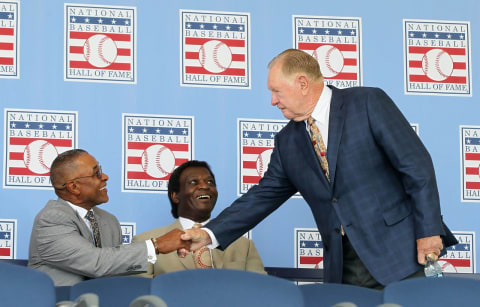
13. The Redhead
1957 – RED SCHOENDIENST / NY GIANTS
In the first months of the 1957 MLB season, the Milwaukee Braves stayed or near the top of the table, dropping back to fourth, then clawing their way to first on June 15.
That’s the day they traded three players to the New York Giants for a difference-maker: second baseman Red Schoendienst.
At 34-years-old, Schoendienst already owned a World Series championship, four top-10 MVP finishes and nine All-Star Game nods.
He still hit 20-plus doubles a year, batted .300, got on base at a .350 clip and played superb defense. Those skills plugged technical gaps, but his presence lifted the team. Hank Aaron revealed how much in an interview later.
When Red donned a Braves uniform, Aaron said, “It made us all feel like Superman. We knew he was going to mean so much to our ballclub that wouldn’t show up in the box score. … (H)e definitely became the leader of that ballclub.”
The team misjudged Schoendienst’s offense. He ended the year leading all second basemen with a .309/.344/.451 line, 118 wRC+ and 5.1 fWAR.
After joining the Braves, “The Redhead” appeared in 93 games and batted .310/.348/.434/.782 including 23 doubles, four triples and six homers.
He walked 23 times while striking out only seven (yes, seven ) in 426 plate appearances. Today, we calculate those numbers and his defense with a value of 3.9 bWAR, 3.3 fWAR, 118 wRC+ and a wOBA of .348.
He played in 106 games the following year but wasn’t well. After the 1958 World Series, Schoendienst found he had Tuberculosis and, “had probably been playing with it for years.”
Doctors removed part of one lung at his request to speed his recovery.
He left the hospital on March 24, 1959, and appeared as a pinch-hitter on Sept. 2, 1959. Schoendienst entered the National Baseball Hall of Fame via the Veteran’s Committee in 1989. In his speech, he told us all why his teammates valued him so highly.
“I never thought that milk truck ride (to St Louis) would eventually lead to Cooperstown and baseball’s highest honor. . .I would play any position my manager asked. Whatever it took to win, I was willing to do. All I ever wanted was to be on that lineup card and become a champion.”
Schoendienst died on June 6, 2018, at the age of 95.
Next: A fight between the Chicago Cubs owner and his player/manager sent the best second baseman in the league – and the World Series – to the Braves.
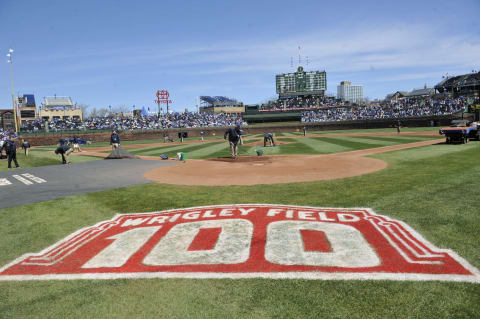
12. The Swan Song of Johnny Evers
1914 – JOHNNY EVERS / CHICAGO CUBS
Many who follow baseball still remember Johnny Evers as a member of the Chicago Cubs’ infield trio immortalized in the 1910 poem ‘Baseball’s Sad Lexicon’:
These are the saddest of possible words: “Tinker to Evers to Chance.”
Few recall that Evers spent four seasons with the Braves near the end of his career.
In 1914, Evers joined Boston in exchange for Bill Sweeney, on a $25,000 contract ($640,230 today) with added incentives that made him the highest-paid player in baseball. Many thought Evers’ age (32), size (5-foot-9) and proclivity for getting ejected made him a bad investment; they were wrong.
On July 5, the Braves were dead last, then they swept the July 6 doubleheader and reeled off a 15-4 streak to end July; Evers led the charge with a .333/.415/.417/.831 line.
In the infield, Evers and Rabbit Maranville vacuumed up everything within reach. In Run Rabbit Run, Maranville said Evers’ baseball knowledge amazed him.
“Evers . . . was psychic. He could sense where a player was going to hit if the pitcher threw the ball where he was supposed to.”
Today, we know Evers led all second basemen with 1.8 dWAR. His regular-season play carried on in the World Series when he hit .438 and had several key hits. He capped off his spectacular season by winning the Chalmers Award as the NL’s MVP.
Like Maranville, Evers passed on a reported $100,000 ($2,560,920 today) bonus to stay with the Braves offered by the Federal League tried to make a splash by stealing away the best major leaguers.
The Philadelphia Phillies claimed Evers off waivers in 1917; after that season, he made spotty appearances until 1929. Writers made him a member of the National Baseball Hall of Fame in 1946.
Next: The Braves found themselves four games back of the Phillies and eight games back on June 1, but back on top by August 1. Considering their lineup issues, that was a minor miracle. Help arrived at the end of August, in the form of a 43-year-old Dominican infielder.
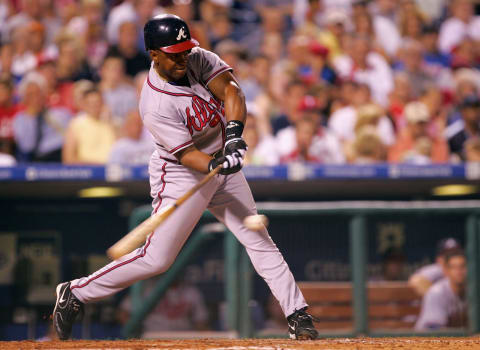
11. Ageless Wonder
2001 – JULIO FRANCO
Braves manager Bobby Cox pieced together a lineup that had several weak spots that season, none weaker than first base, where the departure of Andres Galarraga left a hole that general manager John Schuerholz and Cox couldn’t patch.
A combination of aging veterans Rico Brogna, Ken Caminiti, Dave Martinez and rookie utility man Wes Helms pulled together a .237/.267/.378/.644 line through August. Seeing this, the front office and Cox knew they needed another bat.
On page 42 of Built to Win, Schuerholz gives then assistant general manager Frank Wren credit for finding Julio Franco. Cox thought they were crazy: Franco last played more than one plate appearance in the majors in 1997 and was listed at 40 years old – later they found that number was three years short.
Nevertheless, scouts said Franco could still hit. On August 29, the Braves purchased his contract and Franco became a Brave.
In 25 September games, Franco came to the plate 101 times, walked 10 times, batted .300/.376/.444/.821, hit three homers, four doubles and drove in 11 for the Braves. Fangraphs says that was good for a .357 wOBA and 116 wRC+.
Franco had a superb postseason as well, batting .308/.308/.538/.846 and hitting a homer off the Houston Astros’ Shane Reynolds in the third inning of a Braves’ 6-2 NLDS win. He followed that by driving in both Atlanta runs in Game 7 of the NLCS with a solo homer off future National Baseball Hall of Fame pitcher Randy Johnson in the bottom of the fourth and an RBI single off Johnson in the seventh.
The ageless wonder remained a Brave through his age-46 season (2005), hitting 26 homers, 55 doubles, seven triples, batting .291/.364/.426.790, 105 OPS+, with a .135 ISO, .344 wOBA and 108 wRC+, in 1232 PA in 447 games and returned for 15 games in 2007.
On September 17, the then 49-year-old hit a soft line drive, RBI single to right off an 0-2 pitch from Lee Gardner.
That hit brought his career total to 2,586 hits and his final line .298/.365/.417/.782. 111 OPS+, 43.5 rWAR, 42 fWAR, a .248 wOBA and 112 wRC+.
He played in the majors over a span of 26 years and remains a Braves fan favorite.
Next: During the Braves’ 15-year streak, a tall left-hander came via a pillaging of the Pittsburgh Pirates.
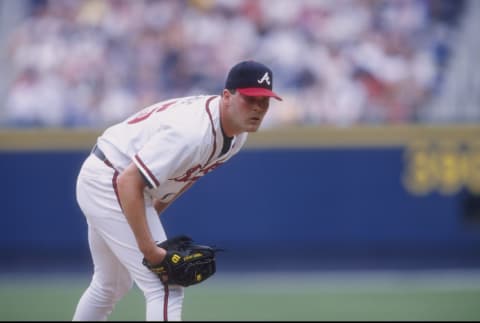
10. The Lefty
1996 – DENNY NEAGLE / PITTSBURGH PIRATES
After defeating the Braves 3-2 on August 27, Denny Neagle had a 14-6 record and 3.05 ERA in 27 starts over 182.2 IP. Seeing him handle Atlanta – combined with that record – John Schuerholz made a stunning move.
. . . the winningest left-hander in the National League . . . another stunning mid-season acquisition for the Braves, who already have an 11-game lead in the National League Eastern Division . . (ahead of) the New York Yankees, Boston Red Sox, Cleveland Indians and Colorado Rockies — all of whom need pitching more than Atlanta
The cost for the Braves in the deal was pitching prospect Jason Schmidt, first baseman Ron Wright and outfielder Corey Pointer.
Neagle threw a scoreless inning in relief of Greg Maddux in Game 2 of the NLCS and started Game 4: tossing 6.2 innings and allowing two runs on two hits. He pitched a scoreless eighth inning in Game 1 of the World Series and threw five innings while allowing three runs – two earned – on five hits in game four.
In 1997, Neagle made 34 starts and posted a 20-5 record, throwing 233.3 innings with a 2.97 ERA (140 ERA+), received an All-Star nod and finished third in Cy Young voting. The following year, he made 32 starts and finished 16-11 with a 3.55 ERA (117 ERA+).
Neagle provided 6.8 rWAR – 8.5 fWAR to the Braves and helped them to the postseason in 1997 and 1998.
Jason Schmidt gave the Pittsburgh Pirates nothing of note, Corey Pointer never progressed above Double-A and Wright had three at-bats with no result for the Seattle Mariners in 2002.
Following the 1998 MLB season, the Atlanta Braves traded Neagle to the Cincinnati Reds for Bret Boone and Mike Remlinger.
Next: On Sept. 30, 1946, the Boston Braves traded future National Baseball Hall of Famer Billy Herman and three warm bodies to the Pittsburgh Pirates for Hank Camelli and Bob Elliott. In 1948, Elliot led them to the World Series.
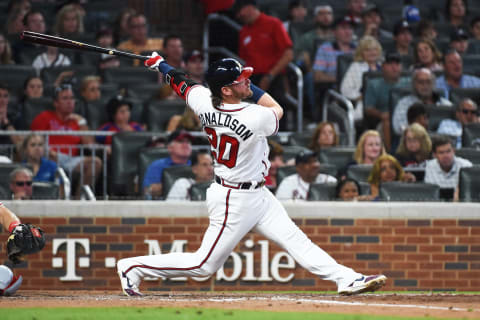
9. Mr. Team
1946 – BOB ELLIOTT / PITTSBURGH PIRATES
The Braves had their eye on two Pittsburgh Pirates, Ralph Kiner and Bob Elliott. Looking back, Kiner seems the obvious choice, but Boston Post Columnist Al Hirshberg says the Braves focused on the Pirates third baseman.
Although Elliott starred in Pittsburgh, Braves manager Billy Southworth knew he had more to give, as he told Elliot after the trade.
If you hustle, I’m absolutely convinced that you will win the most valuable player award this season.
Elliott hustled, finishing 1947 batting .317/.410/.517.927, a 147 OPS+ and Fangraphs tells us a .426 wOBA, 144 wRC+ and 6.4 fWAR, to win the 1947 MVP award, the first Brave to do that since Johnny Evers in 1914.
The 1948 MLB season brought more of the same from Elliott – .283/.423/.474/.897, 143 OPS+, .419 wOBA, 151 wRC+ and 6.6 fWAR – including depositing a 2-1 slider over the bullpen at the 355 sign, to give the Braves the lead in the game that returned the NL Championship to Boston for the first time in 34 years.
In Game 5 of the World Series with the Braves down three games to one, Elliott hit two home runs off the future National Baseball Hall of Fame pitcher Bob Feller, powering his team to an 11-5 victory, in front of a shocked Cleveland Indians crowd.
The Braves lost the series, but Elliott hit .333/.391/.619/1.010 and drove in five runs. He remained with the Braves through the 1951 MLB season and finished with a .295/.398/.485/.833 line, 139 OPS+. 26.4 rWAR and 25.9 fWAR during his five-year stay.
The Braves traded him to the New York Giants in 1952. They had a new kid they wanted to play third in Eddie Mathews.
Next: By contrast, the next deal saw the Braves buy a pitcher no one wanted who led them into that same 1948 World Series.
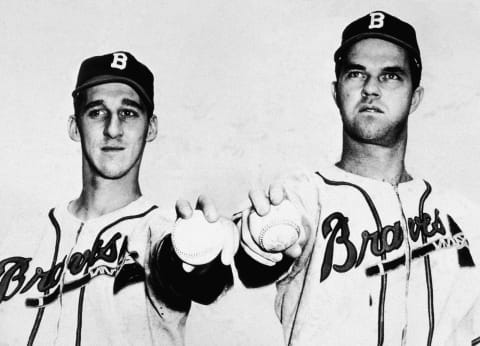
8. Pray for Rain
1942 – JOHNNY SAIN / BROOKLYN (MINORS)
Odd as it seems to longtime Braves fans, other teams gave up on the young version of Johnny Sain and the Boston Bees acquired him for what’s called cash considerations today.
He made his debut in 1942 then – like so many others – went to war. Returning in 1946, Sain appeared in 37 games that season, led the league with 24 complete games and tossed 265 innings, while pitching to a 2.21 ERA, 157 ERA+, a performance worth 7.2 rWAR.
He followed that with a 3.52 ERA, 112 ERA+ in 266 innings and 4.1 WAR in his 1947 campaign as the Braves won 86 games, but the best lay ahead.
In an epic 1948 MLB season, Sain led the National League in starts (39), complete games (28) and wins (24 with four shutouts) in a league-leading 314.2 IP, while pitching to a 2.60 ERA, 149 ERA+.
Those numbers netted him a second-place finish in the NL MVP race and produced an 8.2 WAR season. The Braves finished 91-62, then tangled with the Cleveland Indians in the World Series.
Sain dominated the Indians in Game 1, throwing a four-hit shutout against a lineup that included four future National Baseball Hall of Fame players to beat Bob Feller, 1-0. He returned in Game 4 and allowed two runs on five hits in a complete-game loss to the Indians, 2-1.
From 1946 through 1951, Sain earned roughly $25,000 ($265,708 today) and provided 22.3 rWAR – 22-9 fWAR – for the Braves. The Braves traded Sain to the New York Yankees in 1951 and he retired in 1955.
He returned to the Braves as a pitching coach after their move to Atlanta and mentored the future Hall of Famer Phil Niekro, as well as the Braves’ most famous pitching coach in Leo Mazzone.
Next: 30 years before Sain, the Braves landed another young pitcher nobody wanted and kept him for the better part of a decade.
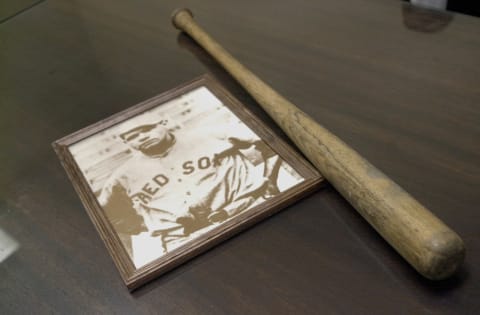
7. Bargain Shopping
1913 – DICK RUDOLPH
The Boston Braves didn’t acquire Dick ‘Baldy” Rudolph through great scouting … he fell into their lap. Third base coach Fred Mitchell met him on the way to spring training. Rudolph said he might quit and Mitchell told him to call back first.
Rudolph called, Braves owner James Gaffney wrote a check and Rudolph became a Brave in exchange for $5,000 ($129,340 today). Mitchell later called that, “ … one of the greatest bargains that James Gaffney ever got in his life.”
Much like Greg Maddux joining the Atlanta Braves, Rudolph proved the perfect complement to Bill James and Lefty Tyler; Tyler and James were both hard throwers, while Rudolph’s assets included a “great curveball and spectacular control.”
He followed his 1913 14-13 record, 2.92 ERA (113 ERA+) in 22 starts with a breakout 26-10 record, 2.35 ERA and 121 ERA+ in 1914. Today, we would rate his 1914 campaign as a 6.2 bWAR (and fWAR) season.
Rudolph started Game 1 of the World Series against future Hall of Fame righty Chief Bender. On that day, Rudolph looked like the Hall of Fame pitcher.
The Braves scored two off Bender in the top of the second and the Philadelphia Athletics replied with one unearned run in the home half; then, Rudolph slammed the door and the Braves won 7-1.
Rudolph returned in Game 4 to provide more misery for the Athletics, tossing another seven-hit complete game in a 3-1 win. That completed the Braves’ sweep of the Athletics, considered by most the best team in baseball at that time.
In the three-year stretch from 1914 through 1916, Rudolph appeared in 127 games including 117 starts, tossing 989.2 innings with a 2.30 ERA, 2.34 FIP, 116 ERA+ and 1.032 WHIP, winning 67 games, and in today’s terminology, notching 14 saves.
In 1918, Rudolph threw 154 innings with a 2.57 ERA before arm issues forced him off the field.
A Brave for seven-plus seasons, Rudolph posted a 121-108 record and six saves, with a 2.62 ERA, 2.50 FIP, 106 ERA+, in 2035 IP. Baseball-Reference grades that as 21.8 rWAR, while Fangraphs calls it 27.6 fWAR.
Rudolph retired in 1927 but remained in the game for the rest of his life. He passed away on Oct. 20, 1949.
Next: Nothing lasts forever, and the departure of Tom Glavine and Maddux left a void the Braves had to fill. They began the process by calling Oakland for one of their big three.
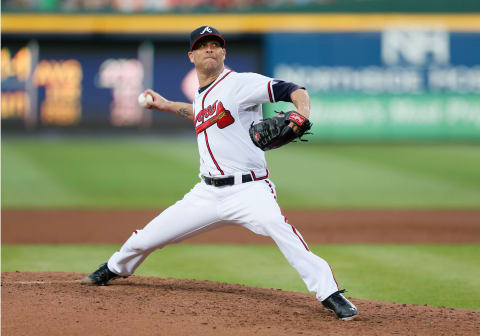
6. Huddy
2005 – TIM HUDSON / OAKLAND A’S
In Built to Win, John Schuerholz discusses the sharp increase in payroll costs, as attendance at Turner Field continued to fall.
The Braves didn’t have the money to keep Gary Sheffield or J.D. Drew. More significantly, they had to let Greg Maddux and Tom Glavine leave in free agency.
After an in-season call, discussions at the general manager meetings and ongoing talks leading up to the Winter Meetings, the Braves sent Baseball America’s No. 43 ranked prospect pitcher Dan Meyer, former No. 6 prospect pitcher Juan Cruz and outfielder Charles Thomas to the Oakland Athletics for Tim Hudson.
Hudson joined a pitching staff and roster that bore little resemblance to the one that dominated baseball for over a decade. Other than Chipper Jones, no one in the everyday lineup had a birthday before 1976. John Smoltz was the only survivor of the Braves’ Big Three in the rotation.
In 29 starts that year, Hudson earned 14 wins, the team won 17 times and twice the team lost after he left the contest with a lead or the game tied.
“The Baby Braves” made it to the postseason and Hudson made two starts in the NLDS giving up five runs in 6.2 innings of the Game 1 loss and coming back in Game 5 to throw seven innings of six-hit, three-run ball. He left that game with a lead, but the Braves lost after the bullpen twice blew the lead.
Hudson remained with the Braves through the 2012 MLB season, assuming the role of mentor to younger pitchers and ace of the staff, while pitching for some pretty bad teams in that nine-year stay.
Injuries cost him part of the 2009 MLB season, but he returned in 2010 to post a 17-6 record with a 2.83 ERA in 228.2 IP and finish third in Cy Young Voting. Baseball-Reference calls that a 5.8 rWAR season, but Fangraphs calls it 1.7 fWAR
As a member of the Braves, Hudson won 113, lost 72, tossed nine complete games and pitched to a 3.56 ERA, 115 ERA+, amassing 24.1 rWAR – 19.4 fWAR. Hudson retired after the 2015 MLB season with the San Francisco Giants.
Next: We’re back to a special team, built from several key additions, that surprisingly won a World Series title while treating fans to the best comeback in baseball history.

5. Run, Rabbit, Run
1913 – “RABBIT ” MARANVILLE / NEW BEDFORD (MINORS)
The Boston Braves sent pitcher Brad Hogg and $1,000 ($26,400 today) to New Bedford in exchange for their shortstop, Walter James Vincent “Rabbit” Maranville.
In his first two full seasons, Maranville finished No. 3 (1913) and No. 2 (1914) in Chalmers Award (MVP) voting, losing to his new double-play partner Johnny Evers in 1914.
During the miracle 1914 MLB season, he led NL shortstops in games (156), innings (1,397), chances (1,046) and notched over 100 more put-outs than any other shortstop. Mike Lynch called Maranville’s defense “otherworldly.”
Today, that’s 6.29 fielding runs a game (RF/G) and 4.2 dWAR. As a comparison point, Andrelton Simmons recorded a 4.2 dWAR season in 2017, with an RF/G peak of 4.74 in 2013.
In the World Series sweep of the Philadelphia Athletics, Maranville hit .308/.400/.308/.708, stole two bases and drove in three runs.
The Federal League offered him a $50,000 signing bonus ($1,267,782 today) to jump leagues. At a time when the average hourly wage in factories sat at 24 cents; that’s hard to ignore, but Maranville said no.
The Braves traded him to the Pittsburgh Pirates before the 1921 MLB season, but “Rabbit” returned in 1929 and finished in the top 20 during MVP voting in 1929, 1931, 1932 and 1933.
In a 1934 spring training game, with the Braves trailing the New York Yankees by a run. “Rabbit” tried to score, even though the catcher had blocked the plate.
. . . Maranville lay in agony, a bone jutting out of his ankle. “Out!” roared the umpire. Rabbit reportedly pointed to his limp foot resting on the edge of the plate and said, “You see where that foot is, don’t you?” He then passed out.
That injury cost him the 1934 MLB season and effectively his career. Maranville died in January 1954, weeks before the National Baseball Hall of Fame voters finally recognized him and elected him to Cooperstown.
Next: In 1953, the Cincinnati Reds had too many first basemen. Luckily for the Braves, the Reds kept the wrong one.

4. Billy Joe
1953 – JOE ADCOCK / CINCINNATI REDS
Vin Scully called him “Billy Joe”, but he was the only one to get away with that. At 6-foot-4, 210 pounds, most called him “Big Joe” or “sir”. The Braves acquired Joe Adcock from the Cincinnati Reds in exchange for $50,000 ($479,573 today) and Earl Torgeson.
Over the next 10 years, Adcock hit monster homers – the kind that we’ve seen from Austin Riley and Ronald Acuña Jr. this year.
Adcock treated the Brooklyn Dodgers and New York Giants the way Freddie Freeman treats the New York Mets. Many of his record-setting monster shots took place in Ebbets Field and at the Polo Grounds. That made some pitchers unhappy – particularly Dodger and Giants pitchers who hit him … a lot.
- On July 31, 1954, Adcock became the seventh player to hit 4 homers in a game; he doubled as well, setting a Major League record for total bases in a game (18).
- The next day, Dodgers pitcher Clem Labine beaned him.
- Adcock hit nine homers at Ebbets Field in 1954, the last one on Sept. 10.
- During his first trip to the plate the next day, Don Newcombe broke his thumb.
- A year to the day after Adcock’s four-homer game, Giants righty Jim Hearn hit Adcock on the wrist and broke it.
Adcock took getting hit in stride; that’s how they played the game.
“That’s how I earn my living. Hitting, I mean,” Adcock told sportswriter Red Smith. “You’ve got to make up your mind – do you run away from pitches or stay in there and hit? “
- On June 17, 1956, he hit a walk-off homer over the 365-foot sign in left-center field, over the 83-foot-high grandstand that hit on top the upper-deck roof in Ebbets Field — that’s a big fly.
Gregory Wolf called Adcock, ” One of the most feared sluggers of the 1950s and early 1960s.
an accomplished and underrated first baseman whose long arms helped him dig out errant throws . . . led first basemen in fielding percentage four times, including three consecutive seasons . . retired with the third-highest fielding percentage (.994) at first base in major-league history. . .
Adcock hit 289 career homers, 251 as a Brave; Charley Grimm platooned him for a long time or he’d easily have hit 300.
As it is, even those numbers are one homer short of what he really did.
In the 13th inning of what Sports Illustrated called ‘the greatest game ever pitched’, Adcock drove in the winning run with a big fly over the right-field fence … the only hit of the game for the Braves.
Except that in the record books, it’s a double. That’s because after the lead runner touched home, the trail runner – Hank Aaron – headed for the dugout. That shortcut cost Adcock a homer.
“Billy Joe” retired in 1966 and passed away in 1999.
Next: When someone’s about to steal your division title, it’s good to have a big dog around.
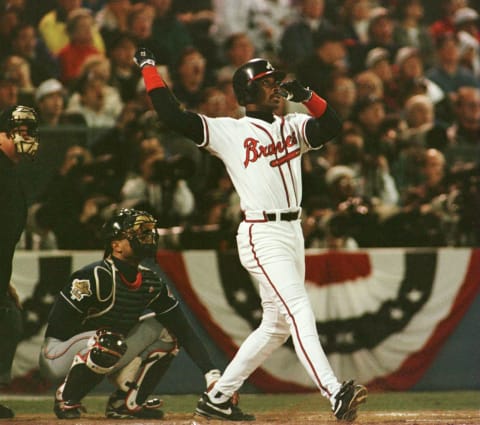
3. The Crime Dog
1993 – FRED McGRIFF / SAN DIEGO PADRES
After back-to-back league titles, the 1993 Braves found themselves 9.5 games behind the San Francisco Giants in July and in need of a bat. The San Diego Padres wanted to clear payroll and their first baseman earned a big chunk of that payroll.
As a result, Fred McGriff joined the Braves and in what many consider one of the most one-sided deals of the post-war era. The Braves sent Vince Moore, Donnie Elliot and Melvin Nieves to the Padres for McGriff.
Those prospects made little to no impact; McGriff put the Braves on his back and carried them to the postseason.
The press box caught fire before McGriff’s first game and after the St. Louis Cardinals treated Tom Glavine badly for five innings, the Braves – led by McGriff – returned the favor.
That win started a 51-18 record run over the rest of the season. McGriff hit 19 homers, 18 doubles, a triple, drove in 55 runs and batted .310/.392/.612/1.004 with a 165 ERA+ in that stretch. Fangraphs says that’s worth a .431 wOBA,162 wRC+, and 3.1 fWAR.
The Philadelphia Phillies won the NLCS in six games, but McGriff did his best to prevent that, batting .435/.519/.696/.1.214 with a homer and four RBI.
After the season, outfielder Ron Gant told Claire Smith, ” . . . He just makes everyone else better.”
The 1995 World Series-winning season saw more of the same from McGriff. He played every game that year and posted video-game numbers in all three postseason series that year and again in 1996. McGriff left the Braves as a free agent after the 1997 MLB season.
As a Brave, McGriff batted .293/.369/.516/.885, with a 128 OPS+. Baseball-Reference shows him as a 12 rWAR player during that time, while Fangraphs gives him 13.3 fWAR
Next: The Braves declined after the 1948 MLB season, but not for long. The next player added to an already strong roster and sparked another World Series win in 1957.
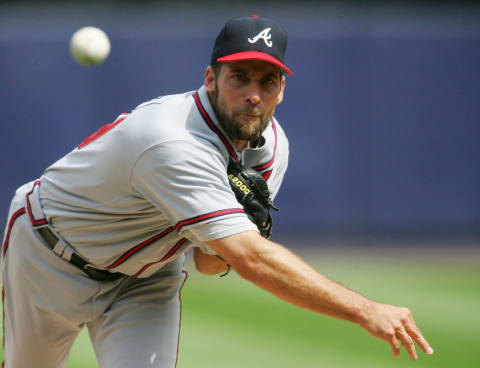
2. Exploiting the Yankees
1951 – LEW BURDETTE / NEW YORK YANKEES
In August 1951, the New York Yankees wanted Johnny Sain. In return, they sent Lew Burdette and $50,000 ($492,484 today) to the Milwaukee Braves.
Past his prime and with a balky shoulder, Sain became a reliever. Six years later, Burdette reminded the Yankees they’d made a mistake.
After a slow, league-average 1952 MLB season on a bad team, Burdette began a streak of nine consecutive double-digit win seasons, averaging 17 wins a year and a 3.43 ERA worth a total of 25.5 rWAR (26.3 fWAR).
A superb 1956 saw Burdette win 19 games and the NL ERA title (2.70, 125 ERA+), but the pinnacle of his career came during the 1957 World Series against a Yankees team that won the AL by eight games. Their lineup led the league in runs, hits, triples, average, slugging and OPS, but it had no answer for Burdette.
He threw three complete games – the last on two-days rest – winning Game 2 4-2, then shutting out the powerhouse Yankees in Game 5 (1-0) and Game 7 (5-0). In doing so, Burdette became the first pitcher since Christy Mathewson to fire two shutouts in a World Series and the first in 37 years to pitch three complete games and win all three.
Burdette continued his dominance in 1958 – 20-10 and a 2.91 ERA in 275 1/3 IP – but found the Yankees harder to handle in the World Series, winning only one of the three starts; the victory came as a result of another complete game.
He won 21 and tossed 289.2 innings, including 20 complete games in 1959, and came on top when he faced the Pittsburgh Pirates’ Harvey Haddix in that epic 13-inning contest.
While everyone knows about Haddix’s feat, few realize that Burdette pitched the full 13 innings for the Braves, walking none and scattering 12 hits in a complete-game shutout.
Burdette missed his own perfecto in 1960 when he hit Philadelphia Phillies outfielder Tony Gonzalez in the fifth inning. The next batter hit into a double play, and no one else reached base, as he beat the Phillies, 1-0: Still getting credit for throwing a no-hitter.
Burdette’s 1.9 BB/9 rate places him No. 59 among all pitchers, fifth among pitchers with 3,000 IP in the live-ball era behind Robin Roberts (1.73), Greg Maddux (1.80) Carl Hubbell and Juan Marichal (1.82); and second among Braves pitchers with 2,500 innings.
He’s also No. 4 in that group for complete games and shutouts – Kid Nichols, Warren Spahn and Phil Niekro – and sixth in games started, innings pitched and HR/9 (0.86).
Burdette retired in 1967 and acted as Braves pitching coach in 1972. His bio quotes an unsourced clipping in his file at Cooperstown.
“They’ve always been my club. Everything good happened when I was with the Braves. They’ve been my life.
Lew died in 2007, at the age of 80.
Next: The best deal the franchise ever made happened because the man they wanted as manager insisted that they purchase the contract of a pitcher on his current team, a 19-year-old right-hander everyone called ‘Kid.’
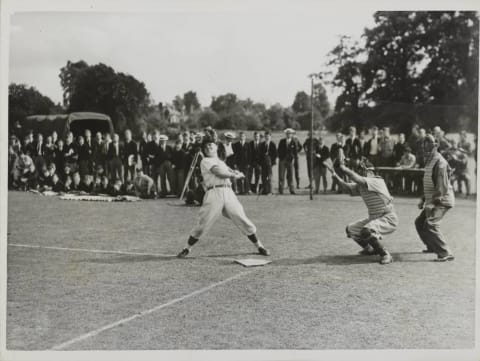
1. The Kid
1890 – CHARLES AUGUSTUS ‘KID’ NICHOLS / OMAHA (MINORS)
The Boston Beaneaters paid the Omaha Omahogs $3,000 ($84,425 today) for Kid Nichols‘ contract; a bargain at twice the price.
He won his first game for Boston, but no one paid attention until he squared off against the New York Giants’ 19-year-old righty and future Hall of Famer Amos Rusie in a thirteen inning battle.
. . .This pitching duel was immediately put on a pedestal by journalists, and remains one of the most-discussed battles of the National League’s early decades.
In 1892, the Beaneaters met the Cleveland Spiders in the first postseason series championship series, The Split Season Playoff. Nichols started two games, throwing a seven-hit, complete-game shutout in game four and besting Cy Young in Game 6. He finished the series with a 1.00 ERA and 1.167 WHIP in 18 innings of work.
He appeared in 557 games for Boston, started 502, threw, 476 complete games and finished 53 others for a total of 4,549 IP.
He won 330, lost 183 and by today’s definition, recorded 15 saves while pitching to a 3.00 ERA, 143 ERA+. Baseball-Reference credits him with 107.4 rWAR, while Fangraphs gives him only 72.9.
Bill James wrote about Nichols in his 2001 edition of The New Bill James Historical Baseball Abstract.
. . .while you might have guessed (Babe Ruth and Mickey Mantle) as the players with the biggest impact on pennant races in a career, the number three man was a pitcher who had a decisive impact on the pennant races of 1891, 1892, 1892, 1897, and 1898, Kid Nichols. Nichols won [at least] 30 games in all of those seasons—for teams that won pennants by relatively thin margins.”
Thanks to the loud and constant intervention of players who saw or knew of Nichols, including Ty Cobb, Nichols earned membership in the National Baseball Hall of Fame in 1949.
Next. Speaking of deals, this one could be sweet. dark
There are other deals with a shorter-term impact that didn’t make the list and the discussion ignores free-agent acquisitions.
That said, these deals created a huge part of the history of the Braves franchise.